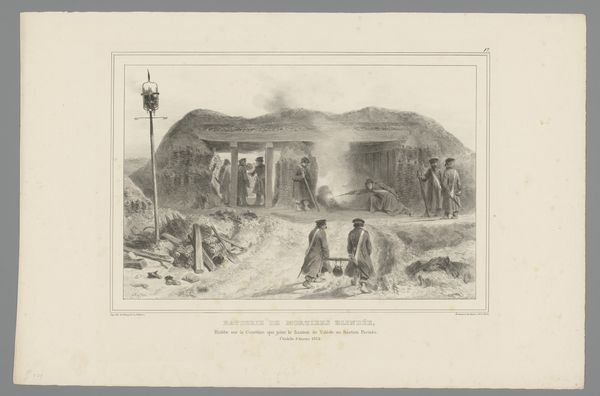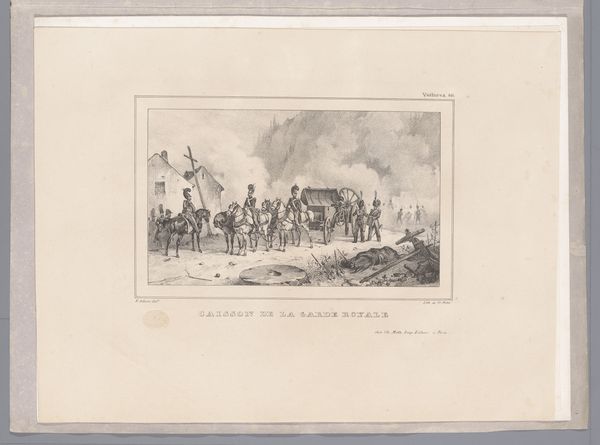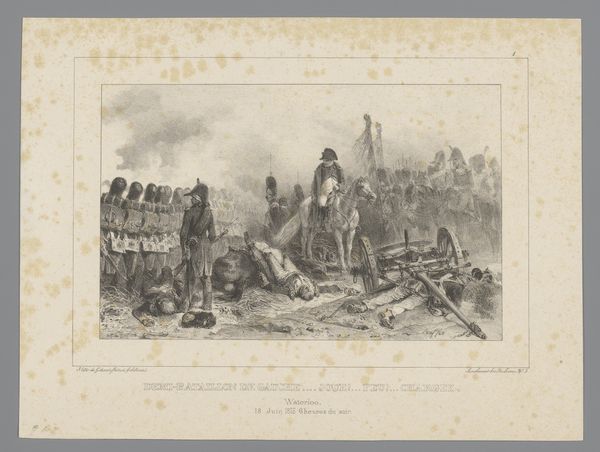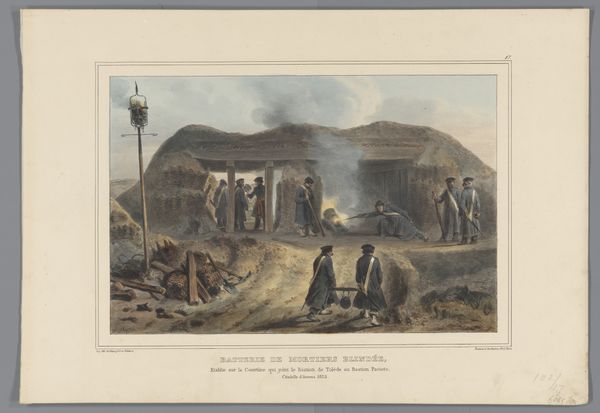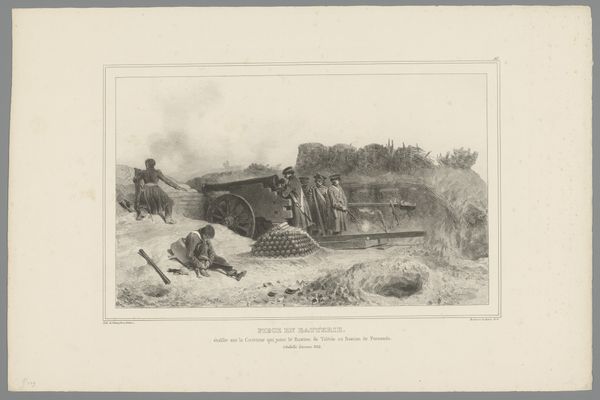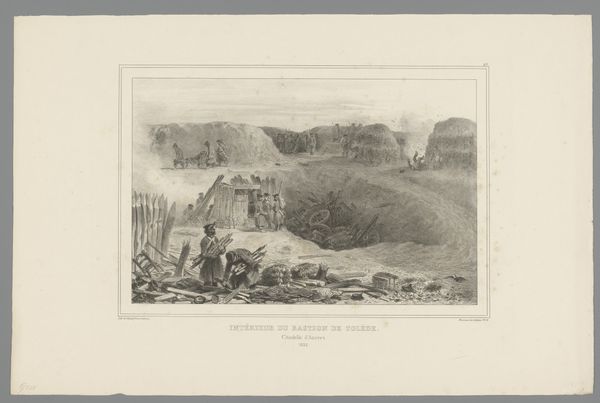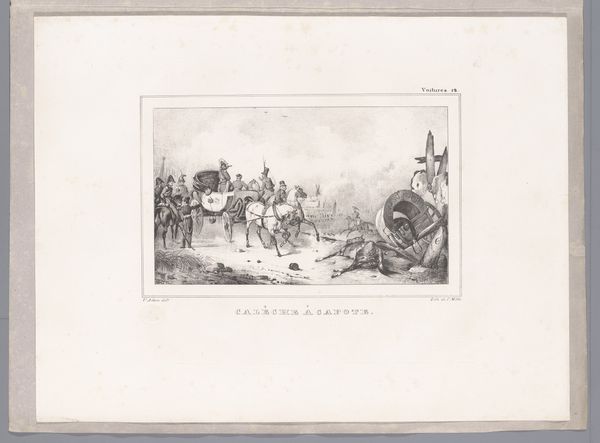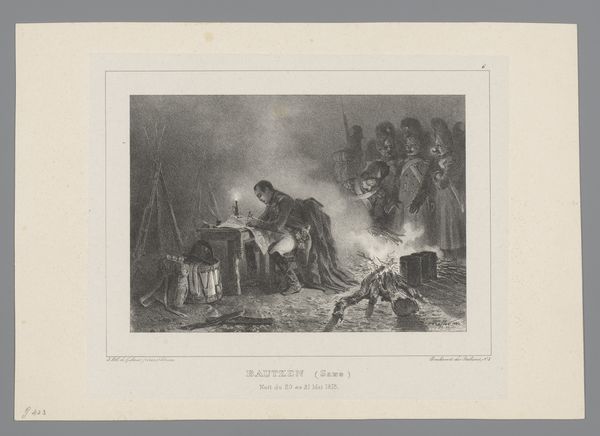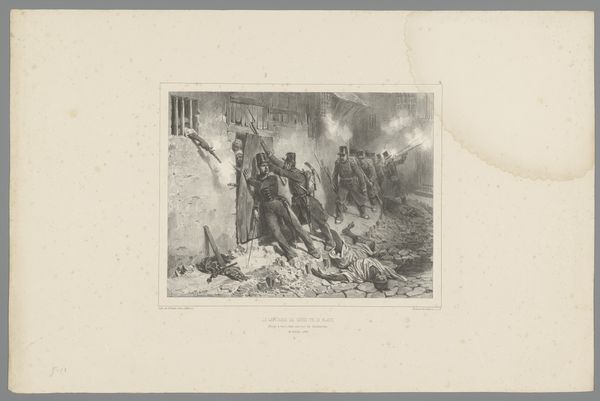
#
aged paper
#
light pencil work
#
pale palette
#
pencil sketch
#
light coloured
#
personal sketchbook
#
sketchbook drawing
#
watercolour illustration
#
sketchbook art
#
watercolor
Dimensions: height 367 mm, width 551 mm
Copyright: Rijks Museum: Open Domain
Curator: Before us, we have "Ingegraven kanon, 1832" created around 1833 by Auguste Raffet. It's currently held at the Rijksmuseum. What are your initial thoughts? Editor: My immediate impression is the materiality—it reads like a pale pencil sketch, a work in progress almost. There's a sense of age to the paper itself. Curator: Indeed. Raffet's illustration employs a subtle layering of graphite and what appears to be watercolor washes. Note how the architectural forms defining the artillery positions contrast against the uniformed figures, structuring a spatial interplay between the constructed and the human elements. Editor: I am interested in the construction, yes. Look at the materials, these cannon emplacements are constructed hastily out of woven wood. The rapid creation suggests an urgency and highlights available resources—human labour, local materials hastily put together, revealing an improvisational military engineering in this conflict. Curator: I agree. There's a strategic balance in the piece between those woven materials that reinforce protection. The soft medium helps emphasize the vulnerable state of these men at the ready, doesn't it? Editor: Vulnerability, yes. I can't help but think about how easily destroyed those woven emplacements would have been by modern artillery, juxtaposed by those heavy guns sitting dug in. The material fragility almost taunts the violence implicit in its function. Curator: Perhaps that's what gives the piece its dynamic tension, that the artist is inviting us to contemplate the ephemeral nature of even our most fortified defenses. I see a delicate interplay, an intentional paradox created by juxtaposing the solidity of weaponry and architecture with an almost tender treatment in graphite and watercolor. Editor: Well said. This look at the image shows that behind the lines is always more complicated than what you see on a field. It leaves you wondering about these quick built structures more than you might anticipate. Curator: Absolutely, Auguste Raffet prompts a consideration beyond simply documenting conflict.
Comments
No comments
Be the first to comment and join the conversation on the ultimate creative platform.

